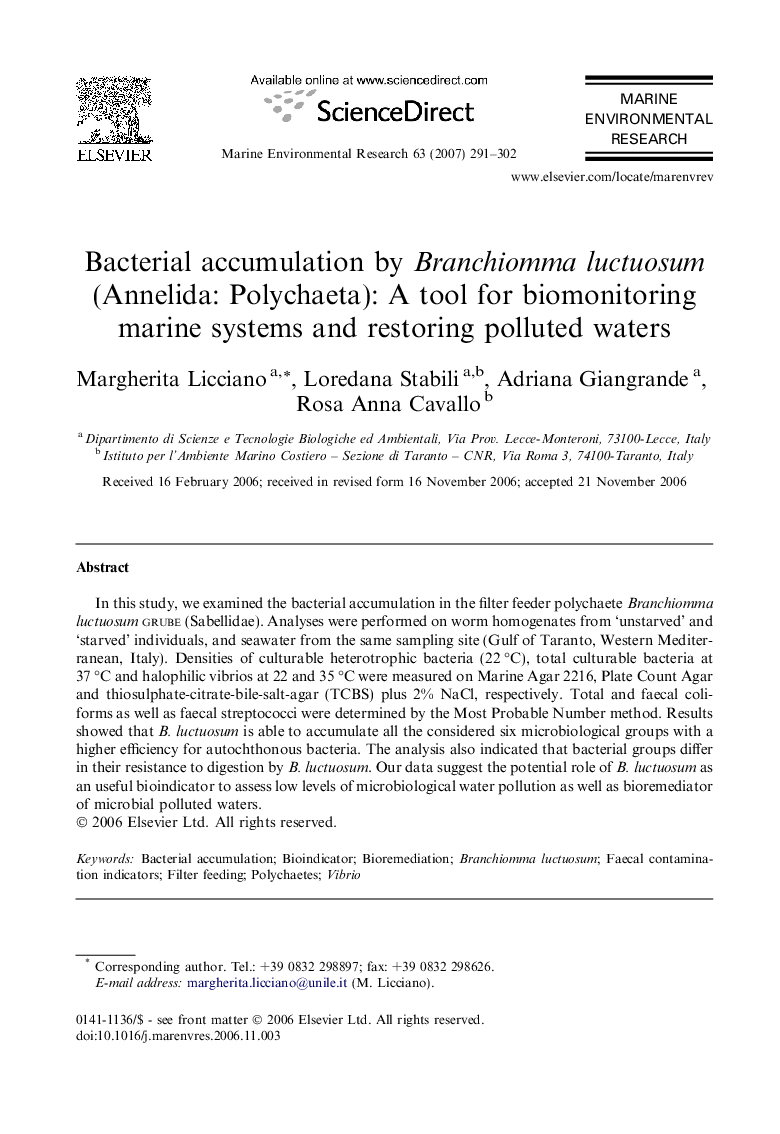| Article ID | Journal | Published Year | Pages | File Type |
|---|---|---|---|---|
| 4551621 | Marine Environmental Research | 2007 | 12 Pages |
In this study, we examined the bacterial accumulation in the filter feeder polychaete Branchiomma luctuosumGrube (Sabellidae). Analyses were performed on worm homogenates from ‘unstarved’ and ‘starved’ individuals, and seawater from the same sampling site (Gulf of Taranto, Western Mediterranean, Italy). Densities of culturable heterotrophic bacteria (22 °C), total culturable bacteria at 37 °C and halophilic vibrios at 22 and 35 °C were measured on Marine Agar 2216, Plate Count Agar and thiosulphate-citrate-bile-salt-agar (TCBS) plus 2% NaCl, respectively. Total and faecal coliforms as well as faecal streptococci were determined by the Most Probable Number method. Results showed that B. luctuosum is able to accumulate all the considered six microbiological groups with a higher efficiency for autochthonous bacteria. The analysis also indicated that bacterial groups differ in their resistance to digestion by B. luctuosum. Our data suggest the potential role of B. luctuosum as an useful bioindicator to assess low levels of microbiological water pollution as well as bioremediator of microbial polluted waters.
